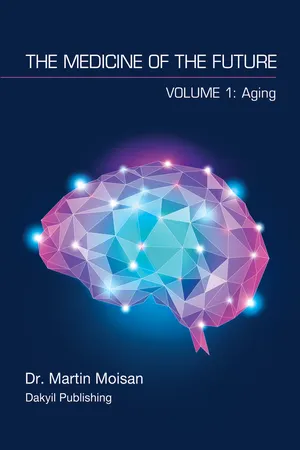
- 86 pages
- English
- ePUB (mobile friendly)
- Available on iOS & Android
About this book
What will the medicine of the future be composed of? How will we succeed, individually and collectively, in better preventing illnesses and improving life expectancy?In this book, the author explains the science behind aging. He hypothesizes that other factors are involved, including chronic abnormalities of the autonomic nervous system, accumulated stress, beliefs, and declining reserves of vital energy (Jing). The author thus draws a connecting line between two ways of thinking: the rational approach of modern medicine and the approach of traditional Chinese medicine. This book also addresses the potential of human beings to decelerate their aging. It deals, among other things, with the use of the breath's rhythm and amplitude. Some exercises are suggested. Furthermore, the author outlines some of the obstacles to implementing this medicine of the future. To illustrate his point, he looks back at the management of the Covid-19 pandemic and the adoption of a law in Quebec to extend medical assistance in dying.
Frequently asked questions
- Essential is ideal for learners and professionals who enjoy exploring a wide range of subjects. Access the Essential Library with 800,000+ trusted titles and best-sellers across business, personal growth, and the humanities. Includes unlimited reading time and Standard Read Aloud voice.
- Complete: Perfect for advanced learners and researchers needing full, unrestricted access. Unlock 1.4M+ books across hundreds of subjects, including academic and specialized titles. The Complete Plan also includes advanced features like Premium Read Aloud and Research Assistant.
Please note we cannot support devices running on iOS 13 and Android 7 or earlier. Learn more about using the app.
Information
Table of contents
- Cover
- Copyright
- Table of Contents
- List of diagrams
- List of tables
- Foreword
- Chapter I: Human Aging
- Chapter II: Slowing Down Body Aging
- Chapter III: Obstacles
- Chapter IV: Hypotheses and Research
- Conclusion
- Appendix 1 – QiGong studies
- Appendix 2 – Other studies
- Bibliography
- Back Cover